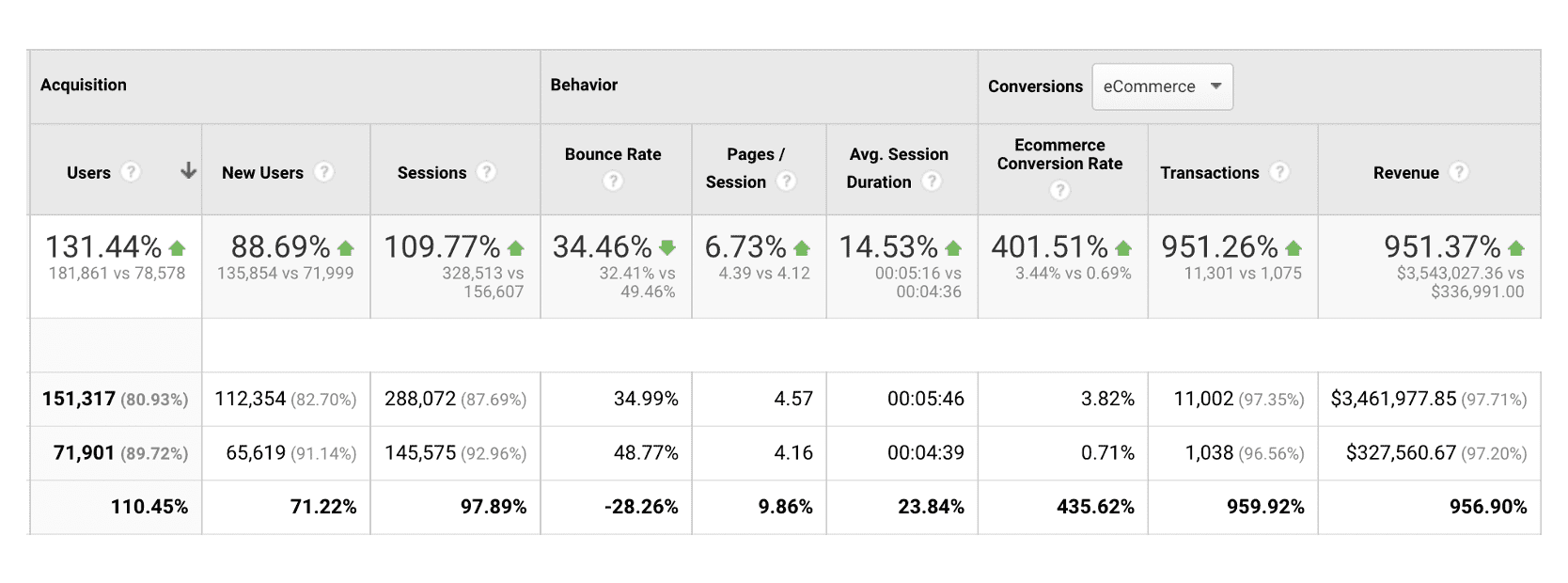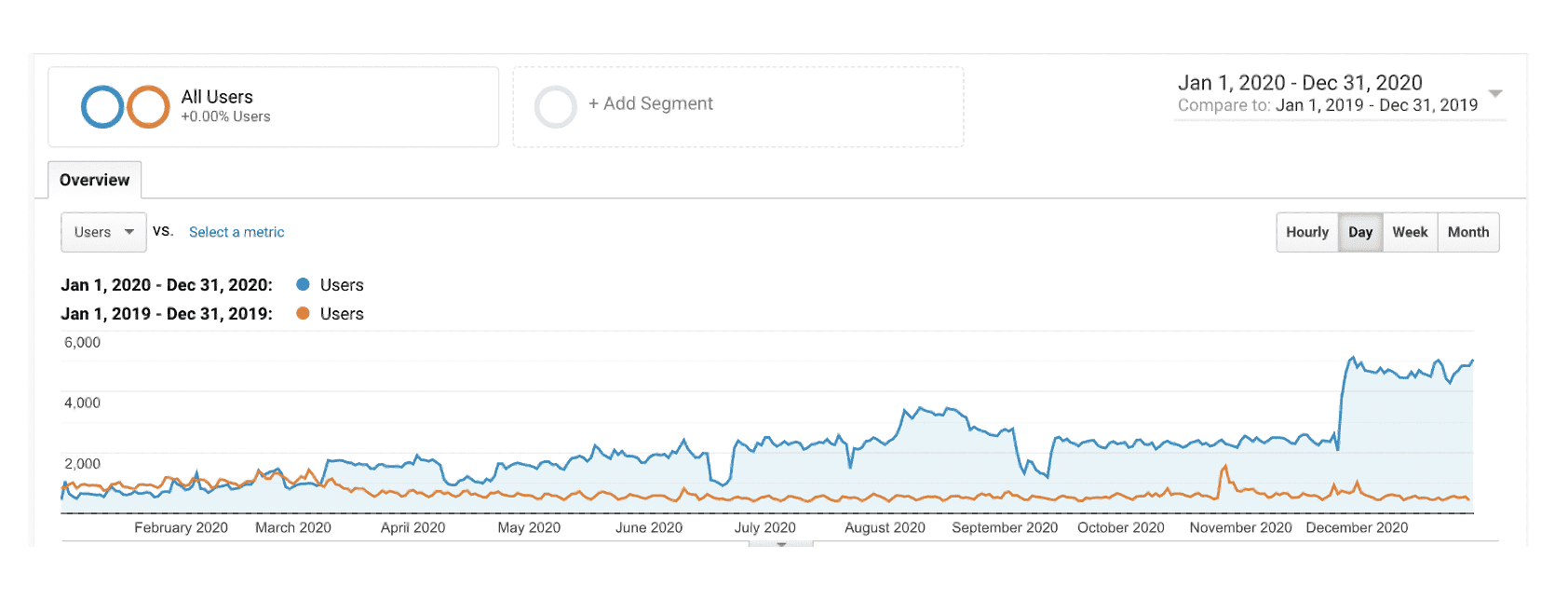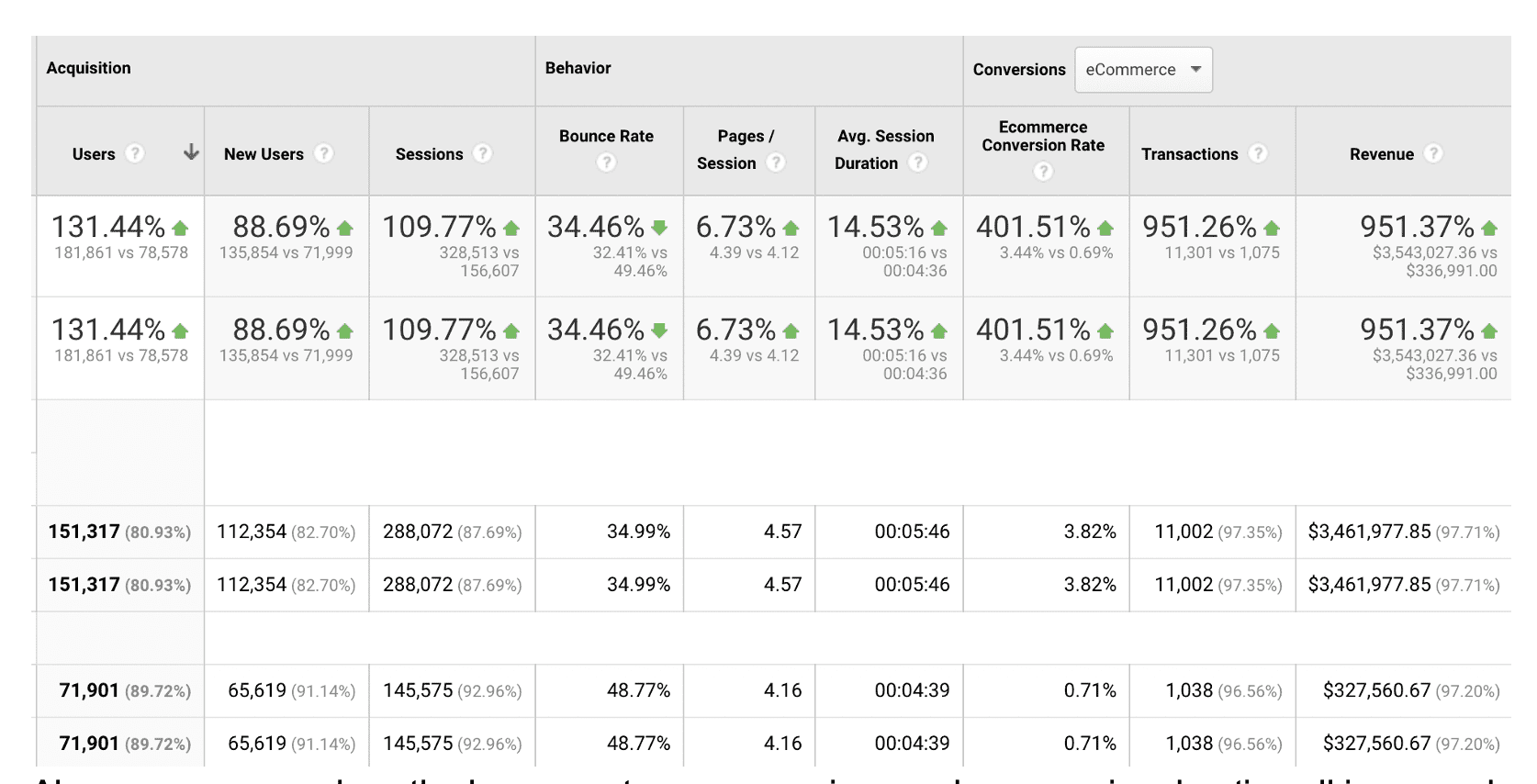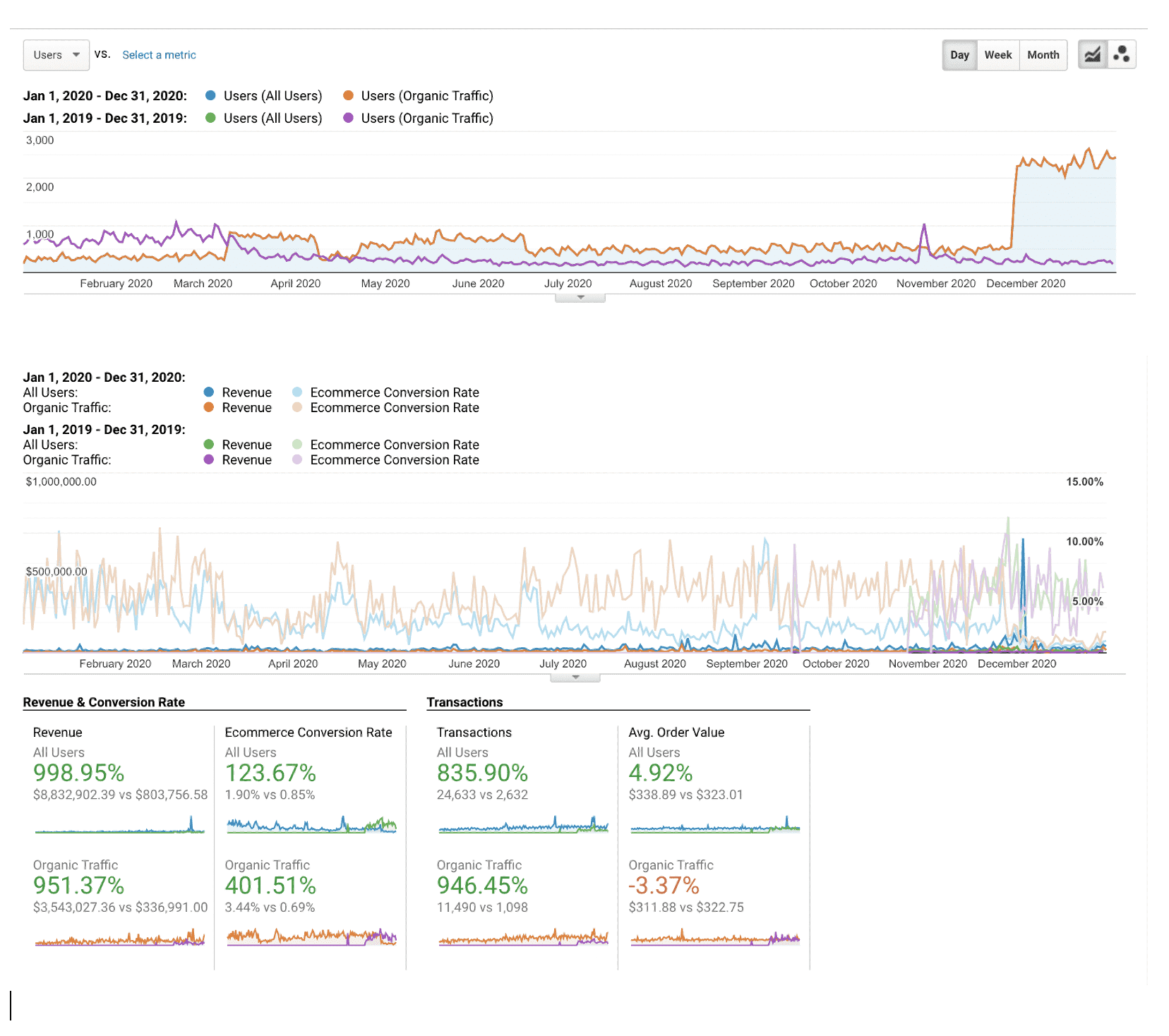I was approached by this client through the recommendation of a personal acquaintance.
This acquaintance of mine had a good friend who was in a spot of trouble.
He had contracted an agency to perform SEO work and had been disappointed in his return on investment.
He had already achieved proof of concept with the product and had a small but loyal group of customers.
So why wasn’t his business growing with this new investment in SEO? You see the agency had given him the excuse that they needed more time.
But the client wasn’t buying it. he had lost trust in the agency over the past months.
The only logical conclusion was the agency couldn’t deliver. They had promised better rankings, more traffic, increases in CTR, AOV and ultimately more profits.
The client asked me if I could do better and also wanted to know if the agency’s claim of ‘needing more time’ was valid.
I told him I would need to analzse his vertical, and the site. In order to get a good idea of what we were dealing with
What Next?
After the end of the conversation, I knew 2 things for sure.
- I was going to have to GENTLY and SLOWLY hold Jim’s hand and guide him along the road to getting his traffic back up to where it was and then some! When someone has been burnt before it strains the relationship, BUT, the pay-off is much, MUCH more rewarding.
- I would have to constantly explain to Jim what I was doing and provide in-depth, meaty reporting on a regular basis.
The Audit
In order to understand the shortcomings for Jim’s (and any client’s) site we must 1st conduct a site audit which involves a combination of On-page, Off-page SEO, Link’s analyses, and a closer examination of the server log files to understand how (and how often) the search engines are crawling and indexing the sites pages.
Another benefit of doing a server log file analysis is to discover any accessibility problems such as 404 and 500 errors.
Checking to make sure that spambots are not crawling pages as well as verifying that actual search engines are crawling and indexing pages is essential to understand.
Reality Check
Before jumping on the next call with Jim I was nervous.
I knew Jim was aware there were problems but I wasn’t sure if he knew the extent. The question was did he understand that the money he had paid to the previous agency was essentially money down the drain?
I discovered numerous problems, most of the backlinks the previous ‘agency’ had built were low quality, potentially even hurting the site.
The disavow tool was going to be running on all cylinders!
If You Pay Peanuts You Get Monkey’s
Jim was not only ready to proceed but he was excited!
Which in turn made me excited.
He was happy with the payment structure, confident in the timeline, AND most importantly!
Trusted me.
I got to work as per the brief with new vigor and a spring in my step.
To Vow or Disavow… That is the question.
I performed an in-depth link analysis using some industrial-grade tools that every good SEO has in his/her toolbox.
I disavowed (asked search engines to ignore) all the problematic links and left only high-quality, authoritative links that I was sure the search engines would trust.
Jim’s site had gradually seen a decrease in traffic corresponding with the accumulation of low-quality ‘self-created’ backlinks such as comments links, profile links, web 2.0 links.
So starting here and grabbing the low-hanging fruit made the most sense.
Low Hanging Fruit
Another area we found that would represent low-hanging fruit was in missed opportunities by the competition.
I analyzed the websites of Jim’s competitors and compiled lists of which keywords they were ranking for and which commercial keywords they were missing out on.
These keywords represented an opportunity to get quick wins and help Jim start covering the costs of our marketing expenses sooner rather than later.
Common SEO problems in eCommerce.
The nature of e-commerce comes with its own problems and as an ecom store owner, you need to know about these.
So here’s the thing…
Primarily we are trying to serve high quality and high converting pages/content to our customers and potential customers.
But we also need to do this in a way that pleases the search engines.
Search engines like Google have come a long way technologically speaking, but there are still many scenarios where we need to design pages and their components so that there is a clear path with which the search engine crawlers can navigate easily through the architecture of our site indexing the stuff we want and ignoring the stuff that is irrelevant.
That’s about how simply I can explain this complex topic.
Some examples of areas where we needed to focus, were:
- Issues with Faceted Navigation and improper canonical tags. We knew getting this right would allow the search engine crawlers to index stuff we want and ignore stuff that is irrelevant. Whilst preserving a finite ‘search engine crawl budget’.
- Breaking down the category into subcategories with new landing pages allowed us to effectively rank for a plethora of relevant keywords to capture more (relevant) traffic and push that traffic into our sales funnel.
- Fixing 4xx, 5xx errors, 302 redirects, and setting up 301 redirects. Mending Broken Links also allowed for easy crawl-ability for search engines and enhanced user experience.
- Setting redirects from unavailable products to the next relevant pages is a simple but effective strategy as setting these pages to 404 can hurt the website’s ranking.
- Setting up detailed ‘product schema markup’ allowed the search engines to easily understand all the components of our products. You can think of schema markup like tags on a jacket describing every feature of the jacket. “Leather exterior” “linen interior” “6 pockets” “8 buttons” “$400” “5 year guarantee” etc.
On-page SEO
I improved internal linking within category and product pages by adding internal tags and internal anchor texts.
I also:
- Included keywords in the title tag and in the meta description
- Included keywords in URL
- Included keyword in the image alt text
- Specified keyword several times throughout text content
- Included links on the page to related products
Diesel Fuel
Site speed is an area we always test and address if needed. In this case, Jim’s site had quite a few areas that could be improved.
In case you didn’t know. A one-second delay in page load time yields 11% fewer page views, a 16% decrease in customer satisfaction, AND… A 7% loss in conversions according to this article, which sounds about right.
Jim’s site was already optimized for mobile but there were some areas that needed some redesign to heighten UX (user experience) which in turn would lead to a higher conversion rate.
Our main goal in terms of page speed was to bring all key pages to the user in a 1 – 3 seconds load time.
Apparently, 47% of consumers expect websites to load in 2 seconds or less and 40% will abandon a page that takes three or more seconds to load.
High Octane
Here are some of the areas we worked on improving:
- Minimize HTTP requests
- Minify and combine files
- Use asynchronous loading for CSS and JavaScript files
- Defer JavaScript loading
- Minimize time to first byte
- Reduce server response time
- Run a compression audit & compress files further where available.
- I also made a suggestion to change hosting providers for the site.
- Enable browser caching for returning users.
A Section from our On-site SEO checklist
Here is a section from our onsite SEO checklist that we use to ensure that we do not forget the many important factors of on-page seo.
- Included keywords in title tags and in meta descriptions
- Included researched and pre-selected keyword in URL
- Included keyword in the image alt text
- Specified keyword several times throughout text content
- Included links on the page to the related products
- Included the main keyword in the H1
- Check to ensure there is only one H1 in the post
- Is the main keyword in the page title and meta description?
- Is the main keyword in the URL of the post?
- Is the URL short enough?
- Is the main keyword in one of the H2 headings?
- Is the main keyword in the first 150 words of the body text?
- Is the main keyword entered in the designated field of your SEO plugin for future reference?
- Does the post have links to related articles?
- Are you linking to authoritative resources?
- Readability: Are paragraphs short enough?
- Does the article include a clear CTA?
- Is the content unique?
- Improve internal links of category and product pages by adding internal tags and internal anchor texts
Off the Page
Off-page SEO is the other side of the coin so to speak. It is the harder part and takes far more time.
The search engines rely upon back-links (votes) from other websites that provide confidence to the search engine algorithm that these sites are linking to the site/page for a reason.
However it’s not as easy as just obtaining backlinks, there are other factors at play such as relevance, trustworthiness, and authority.
Building External Links
We immediately created some unique, interesting, and in some cases controversial content…
This enabled us to start an email outreach campaign by sending emails to related websites that are in the same vertical in-order to get backlinks.
Relevancy of the backlinks is very important when it comes to link building so whenever we get an interested party to respond to our outreach campaign we immediately vet the site to see if the link will be beneficial for our site.
Quality over Quantity
Part of this vetting process involves carefully selecting prospective sites that have good organic traffic and no sudden traffic drops in the domain history.
We also carefully analyze the backlink profile from the perspective referring site to ensure there are no spammy, low-quality links.
Results
After 1 year of fixing all technical SEO issues, implementing on-page SEO, and building quality links. We saw the revenue for this e-com store triple! Organic traffic quadrupled. Exciting times indeed.
(See Google Analytics screenshots below).
1,148% Growth in Users!
From 1st December 2019 to the 1st December 2020 the website witnessed an increase in user traffic that went from 5,085 users to 63,475 users.
Organic traffic experienced a 971% growth increase
Bounce rate (the number of people not making it from the SERP’s (search engine result pages) to the landing page decrease by almost 50% (49.67%)
The average session duration went up by 14.53%.
Show Me the Money
The store conversion rate went up by 951% and you can see the revenue corresponding to this and increasing from $336,991.00 in 2019 to $3,543,027.36 in 2020. Jim was a happy bunny.

The orange line represents users in 2019 and the blue line represents users in 2020, a consistently clear and impressive growth period.
All of this goes to show how beneficial SEO can be for a company. But it’s not an overnight change.
Take a look at the 1st 2 months. Hardly any difference. Luckily I had set the right expectation with Jim so he was expecting this.
I actually told him not to expect any changes for the 1st 3 months. The positive changes began in the 3rd month so I was ahead of my prediction which meant I over-delivered. Which is always better than under-delivering.

Above you can see how the bounce rate decreased, page sessions increased, and avg session duration also increased.
This was due to an easier-to-navigate website from a UX (user experience) standpoint.
Spending extra money with good writers who can craft informative, engaging, and entertaining content leads to more content consumed and more pages visited. Which in turn increases conversions, paying itself off quickly and many times over.
Every aspect of ecom is about investing in your store. The more you invest and the more strategic you are, the quicker and the bigger the payoff will be.
The decrease in bounce rate resulted from the webpage load time improvements we made as explained above.
